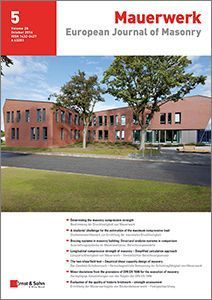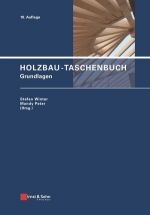European Journal of Masonry 05/16
The two-shearfield test – A suitable method for the empirical shear capacity design of masonry.
by Dipl.-Ing. Viktor Dunjic, Dipl.-Ing. Andreas Rudisch, Univ.-Prof. Dipl.-Ing. Dr. techn. Andreas Kolbitsch.
The investigations demonstrate that the two-shearfield test is a suitable method for the determination of the shear capacity of masonry. The testing equipment is mounted directly on the wall in order to retain realistic boundary conditions like stiffness, load and prior damage. The behaviour factor q and the capacity curves of certain masonry walls can be directly obtained from the experimental results and realistic material behaviour in earthquake design can be represented. In particular, existing masonry can be assessed realistically with methods like the response spectrum, the push-over and the capacity spectrum by using the two-shearfield test.
The full article has been published in issue 04/2016 of the journal Mauerwerk - European Journal of Masonry and is available on Wiley Online Library.
Contents: European Journal of Masonry 05/2016
- Determining the masonry compressive strength
- A students’ challenge for the estimation of the maximum compressive load
- Bracing systems in masonry building: Structural analysis systems in comparison
- Longitudinal compressive strength of masonry – Simplified calculation approach
- The two-shearfield test – Empirical shear capacity design of masonry
- Minor deviations from the provisions of DIN EN 1996 for the execution of masonry
- Evaluation of the quality of historic brickwork – strength assessmen
Order a free sample copy of European Journal of Masonry.
Recommendations
- Winter, Stefan / Peter, Mandy (eds.)
Holzbau-TaschenbuchGrundlagen
10. Edition – August 2021- XIV, 546 pages
- Hardcover
- German
ISBN: 978-3-433-01805-7available- €99,00
- more

